 Whirlygig beetles
Whirlygig beetles
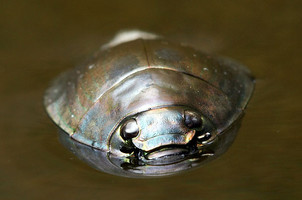
A Dineutes whirlygig beetle from Arizona, © Alex Wild
Whirlygigs beetles (family Gyrinidae) are very interesting animals, that spend much of the time as adults swimming around at the surface of the water. They have four eyes: two on the bottom that watch what's going on in the water, and two on top that look into the air. They also have very odd legs shaped like little paddles so they can scoot around on the surface.
More about whirlygig beetles:
 View Whirlygig beetles swimming
View Whirlygig beetles swimming- This Week at Hilton Pond: Whirligigs
- ARKive: Whirligig beetle
- Dineutes whirlygig beetles
 Exploding beetles
Exploding beetles
Many groups of beetles can release nasty chemicals at things that try to eat them. But two groups of ground beetles (bombardier beetles related to the genus Brachinus, as well as those related to Metrius and Paussus) are especially good at this. They have two little chambers in their abdomens that they mix chemicals in that react so violent that they explode out of the end of the beetles. These chemicals come out very hot - as hot as boiling water - and are poisonous - they have quinones in them. The animals have special structures that allow them to direct where the explosion goes - so that they can shoot it at whatever is bothering them. When you pick one of these beetles up, you can here a pop!, and see a little puff of steam. If they shoot you, it hurts a little, and usually will stain your finger.

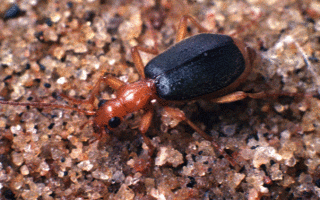
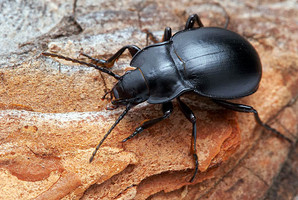
Left: a Brachinus bombardier beetle © 1995 David R. Maddison. Right: a Metrius bombadier beetle, © Alex Wild
More about bombardier beetles:
- YouTube: Bombardier Beetle 1
- YouTube: Bombardier Beetle 2
- TalkOrigins: Bombardier Beetles and the Argument of Design
 Wrinkled-bark beetles: Beetles that walk into wood
Wrinkled-bark beetles: Beetles that walk into wood

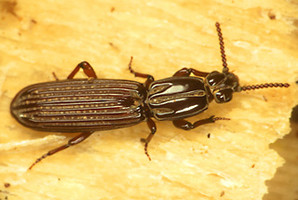
Clinidium wrinkled bark beetle, © 1997 David R. Maddison
More about wrinkled-bark beetles:
 Micromalthus: beetles with no fathers
Micromalthus: beetles with no fathers

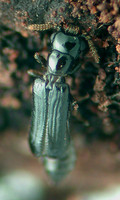
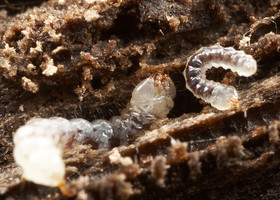
Female Micromalthus beetle, © 2007 David R. Maddison and female Micromalthus larvae, © Alex Wild
More about Micromalthus beetles:
 Priacma: beetles that like laundry
Priacma: beetles that like laundry

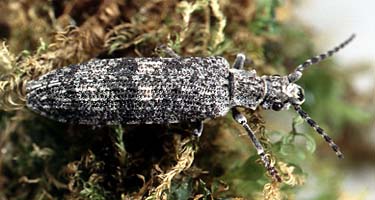
Priacma serrata. © 1996 David R. Maddison
More about Priacma:
 Click beetles
Click beetles

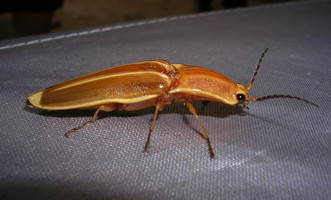
Semiotus click beetle, © 2007 Edwin Bellota
More about click beetles:
 Fireflies: Beetles that glow at night
Fireflies: Beetles that glow at night

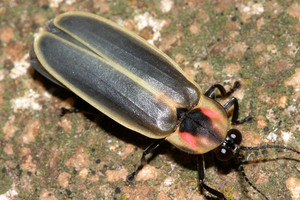
Photinus firefly, © 2004 kim fleming
More about fireflies:
 Stenus: jet propelled beetles
Stenus: jet propelled beetles
More about Stenus rove beetles:
 Ptiliids: the smallest beetles
Ptiliids: the smallest beetles

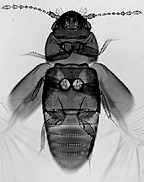
Acrotrichinae. © 1995 W. Eugene Hall
More about ptiliids:
 Ladybird beetles
Ladybird beetles

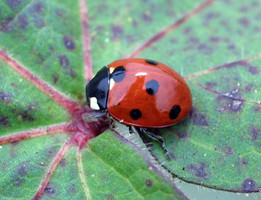
Coccinella septempunctata, © 2005 Russ Ottens
More about ladybird beetles:

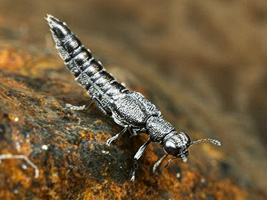




 Go to quick links
Go to quick search
Go to navigation for this section of the ToL site
Go to detailed links for the ToL site
Go to quick links
Go to quick search
Go to navigation for this section of the ToL site
Go to detailed links for the ToL site